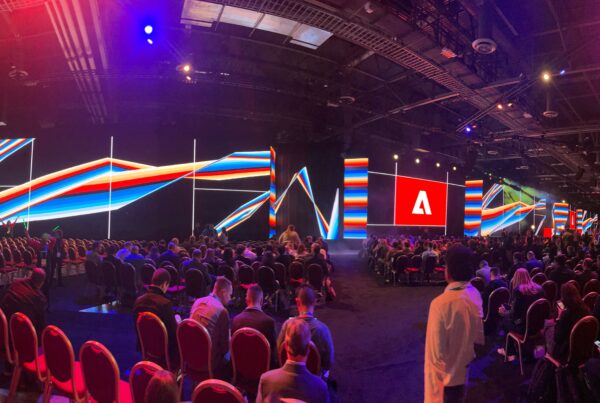When marketing teams push for better MarTech QA (visibility into tag health, consent validation, or analytics performance), IT often steps in with a solution: “We can build something!”
It’s a fair instinct. Building a custom solution offers control and tailored functionality, appealing to organizations with unique requirements. However, this approach comes with significant considerations. Research by McKinsey and the University of Oxford reveals that large IT projects, on average, run 45% over budget and 7% over time, while delivering 56% less value than anticipated.
As former MarTech consultants, we’ve had this conversation with dozens of teams navigating the build vs. buy decision. The answer isn’t always straightforward. But there are patterns – and data – that make the case for buying more compelling than it may first appear.
Why Building Sounds Right… At First
There’s a lot to like about the idea of building a custom MarTech QA solution in-house.
We’re big fans of vendor neutrality, and building in-house gives your team complete control over the tech stack. You can design for your exact needs, integrate with internal systems, and avoid the dreaded vendor lock-in. Assuming you have a strong internal engineering team who understands marketing use cases (which is often not the case) and a stable scope for what needs to be built, it might feel like the right investment.
But there is a key risk – and it is a very real one: cost overruns and long timelines are common, especially as the IT team’s internal priorities shift. What started as a three-month project often becomes a six- or nine-month endeavor… and even then, it might not deliver everything your marketing team needs to get things done.
Real-User Monitoring – Especially for MarTech QA – Is Harder Than It Looks
Tag QA, consent validation, and MarTech data integrity aren’t static problems. They change constantly as your site evolves, vendors update scripts, and consent management strategies evolve.
Building a tool that keeps up with that pace requires more than a single dashboard, regular scans, or a tag presence check. It means accounting for:
-
Dynamic user-specific consent behavior
-
Tag misfires across hundreds of browser types and devices
-
Real-user sessions and actual activity
-
Fast detection and alerting when things break
- Adherence to a growing list of MarTech implementation best practices
Homegrown MarTech QA tools tend to rely on synthetic testing using scripts or browser plugins that a single user can run. It’s pretty easy to check if a tag is present and to run a scheduled test. But most of the time, IT teams don’t have deep MarTech domain expertise (or enough time to dedicate to acquiring it). As a result, the solutions they create miss what’s actually happening for real users in real time.
The Hidden Costs of Building MarTech QA Tools
On paper, building may seem cheaper. After all, you already have the IT teams on staff, and they say they’re ready to help. But costs stack up quickly:
-
Developer time (not just to build, but to maintain)
-
Opportunity cost (what doesn’t get built while this project lives on the roadmap)
-
Delayed time-to-value (you’re waiting months to solve a problem you’re feeling today)
Buying an off-the-shelf product shortens the path to value and frees up your internal team. Some MarTech QA tools do require extensive setup or custom integrations, so it’s worth asking the right questions. Sentinel Insights is designed to be implemented in days. (Helping teams realize value quickly is part of our mission. We’re all about maximizing time and effort.)
You’ll start seeing tag failures, consent mismatches, and broken analytics events in real time, with minimal development overhead.
Addressing the Flexibility Question
The concern with buying is often a perceived lack of flexibility. Some tools are locked into a broader ecosystem, or require you to adopt additional products to integrate fully. If vendor neutrality is important to your organization, that can feel like a compromise.
That’s why we built Sentinel Insights to work the other way. Our platform automatically validates a wide range of MarTech tools using real-user traffic. You can also integrate custom checks that match your specific needs with no lock-in, and no hidden dependencies.
A Better Way to Decide: Build or Buy?
When evaluating the development of a custom MarTech QA solution versus purchasing an existing platform, it’s essential to consider factors such as cost, time-to-market, and resource allocation. Research indicates that building custom software often involves higher initial investments and longer development timelines. For instance, a study highlighted by Forbes notes that building a solution requires not just initial development skills but also ongoing maintenance and evolution capabilities, which can be resource-intensive.
In contrast, purchasing an off-the-shelf solution can lead to faster deployment and reduced upfront costs. According to a comprehensive decision framework (Full Scale), organizations that optimize the build vs. buy process can achieve 30% faster time-to-market and 25% cost savings.
While building a custom solution may seem appealing for a variety of reasons, the potential for cost overruns, extended timelines, and ongoing maintenance shouldn’t be overlooked. Therefore, for most organizations seeking efficiency and scalability in MarTech QA, purchasing a proven platform is often the more practical and beneficial choice.
Interested in exploring how a specialized MarTech QA platform can benefit your organization? Let’s discuss your specific requirements and how we can help.





